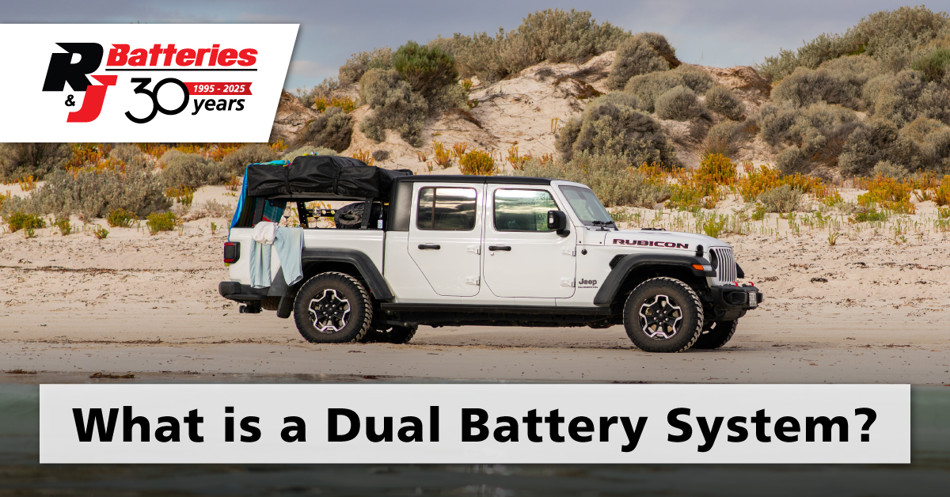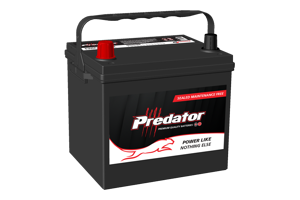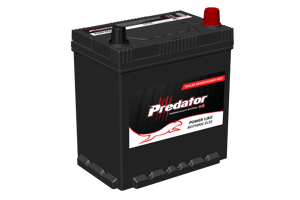Battery 101: Dual Battery Systems
When you're out adventuring in your vehicle, whether it's for camping, off-roading, or simply taking a long road trip, having a reliable power source is crucial. That's where a dual battery system comes in handy. But how exactly does a dual battery system work, and why might you need one? Let's dive into the details to understand the essentials of vehicle power management.

What is a Dual Battery System?
A dual battery system (or auxiliary battery system) is an electrical setup which utilises two batteries in a vehicle instead of just one. The primary purpose of this system is to ensure that you can power your additional electronic devices, even with the engine off, without draining your main starting battery. This system is particularly popular among campers, off-road enthusiasts, and anyone who relies on electronic devices while on the go. These systems are technically known as auxiliary battery systems as they can include more than one auxiliary battery connected in parallel.

Key Components of a Dual Battery System
Starting Battery
This is the primary battery used to start your vehicle. It's designed to deliver a large burst of energy quickly to crank the engine.
Starting batteries are primarily designed to deliver short bursts of high current for engine starting. They are designed to always operate at a high state of charge (>85%).
All vehicles have specific battery requirements, so it's important to make sure you find the correct replacement. Use our battery finder to find the battery that fits the size, technology and CCA rating that your vehicle requires.
Product recommendations: Delkor, ACDelco, KOBA, Predator, OPTIMA

Auxiliary Battery
The auxiliary battery (or batteries) will be a cycling battery that powers all other devices and electronics.
Cycling batteries are designed to deliver power over extended periods of time and can be discharged down to 50% SoC (Lead Acid) or even 100% SoC (LiFePO4).
An auxiliary battery system can include multiple batteries connected in parallel to increase overall storage capacity.
Product recommendations: Delkor, Predator, ALLiON, OPTIMA YELLOWTOP
NOTE: Using a starting battery in an auxiliary power system is like using a greyhound to pull a trailer – neither of them are going to last very long. Conversely, entering a draught horse in a sprint race is going to be about as successful as installing a low CCA deep cycle battery in a starting application!
DC-DC Battery Charger:
The only way to ensure an auxiliary battery is charged and managed correctly is to install its own Battery Management System (BMS) in the form of a DC-DC charger. The DC-DC charger will charge and manage the auxiliary battery when the engine is running, but also keeps the two battery systems separated. This ensures that the starting battery is never compromised.
Why you need a DC-DC Charger:
- A DC-DC charger ensures the auxiliary battery is charged and managed separately to the main starting battery.
- Installing the DC-DC charger close to the auxiliary battery will eliminate voltage drop issues when charging
- Some DC-DC chargers allow solar panel charging, which is especially useful when the vehicle is turned off for extended periods (i.e. camping)
- Smarter and safer charging
- More efficient charging and extended battery life
Product recommendations: Projecta IDC25 – see video from Projecta on why a DC-DC charger is needed in your dual battery system: https://www.youtube.com/watch?v=7LLsdcr5VOw
Solar Panel:
The last key component of a dual battery system is having another means of charging your auxiliary battery if the vehicle is not run for extended periods. A solar panel is a great solution because you’ll always have access to a recharge if there’s some sun peeking through. This is another reason you’ll need a DC-DC charger as many of them support multiple power input sources. Some DC-DC chargers even have the ability to use power from solar panels and a running vehicle at the same time.
Product recommendations: REDMAX Solar Blanket and Solar panels

Why would I need a dual battery system?
One of the most significant advantages of a dual battery system is the isolation of the starting battery, which ensures that there is always enough power to crank your engine, even if the auxiliary battery is fully depleted. This means you can use your electronics without worrying about starting your vehicle when required. This added reliability is beneficial for a variety of applications:
Camping and Outdoor Adventures
For those who love camping and outdoor adventures, a dual battery system can power lights, fridges, inverters and other camping equipment without draining the vehicle's starter battery.
Mobile Workstations
If you use your vehicle as a mobile office, a dual battery system can power laptops, printers, and other office equipment, ensuring you stay productive on the go. Or, if you use your vehicle as your mobile workshop, the system can also help power your tools, lights and other devices.
Road Trips and Off-roading
For long road trips or off road adventures, a dual battery system can keep your navigation systems, portable fridges, and other devices running smoothly. Due to long stretches without access to mains power, an auxiliary battery system can keep you out of trouble. Having a solar panel in the system will keep your auxiliary battery topped up on power wherever you are.
How can I get the most from my Dual battery system?
A dual battery system can last for years if installed correctly. Having an optimised set up with a DC-DC charger will also help prolong the life of the batteries. Here are some tips on how you can get the most from your system.
Installation
Selecting quality products and having them installed correctly is crucial to getting the most from your dual battery system. We recommend having a professional install it and follow all safety advice. See below for more tips on the best system design.
NOTE: Deep Cycle AGM batteries and gel or lithium batteries with ABS cases must not be installed in an engine bay or near any heat source. Batteries perform best when they are kept at around 25oC.
Choosing the right products
You’ll get out of the system what you put in. Finding the best batteries and DC-DC chargers for your application will ensure a longer life. We listed some product recommendations in the ‘Key Components of a Dual Battery System’ section, which are products we recommend to last the distance. Deciding which battery technology to choose for both your starting and auxiliary battery would also be key. For auxiliary batteries, we recommend AGM or Lithium (LiFePO4), which will last longer than a flooded lead acid battery. Lithium batteries are the premium choice as they have twice the usable capacity of lead acid batteries (i.e. they can be discharged to 0% SoC vs lead acid limited to 50% SoC).
Maintenance
Regularly testing your batteries and checking the equipment within your dual battery set up will help keep the system running smoothly for longer. Checking for signs of corrosion and keeping the terminals on the batteries clean will make them last their intended life. Also, remember to check any wiring and fuses in your set up to ensure the DC-DC can deliver maximum power at peak efficiency.
Usage
Monitor your power consumption and plan for your power usage. By planning ahead, you can have the power ready for your needs without over discharging the battery. We recommend using our Auxiliary Battery System Calculator to determine how much power your devices will consume and how long your batteries will last.
System Design & Installation Tips:
Here are some tips for installing an auxiliary battery system which will help you get it right the first time:
- Always install the DC-DC charger as close as practical to the auxiliary battery (or batteries).
- Best practice is to use crimped connections for power wires – the mechanical retention of a crimp will ensure the wires are always positively retained (solder can melt!).
- Always install a fuse in a power cable. The fuse must be located as close as possible to the power source (i.e. battery or terminal block), not at the device. Fuses are installed to protect the wiring, not the device.
- To increase the storage capacity of an auxiliary battery system, connect multiple batteries in parallel. If there are more than 2 or 3 batteries in the parallel group, connecting the power and charging cables to opposite ends of the group will balance out any voltage drop when discharging or charging.
- To minimise the voltage drop in power wires, ensure you use wire which is large enough to carry the rated current.
A dual battery system offers numerous benefits for those who need reliable and efficient power solutions on the go. With a dedicated battery for starting your engine and another for powering devices, you can enjoy the convenience of modern technology without the worry of risking your starting battery. Invest in a high-quality system, and you'll be ready for whatever adventure comes your way.



